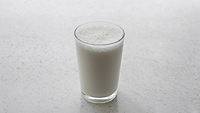Canadian Survey Shows No Detectable Phthalate Levels in 93 Percent of RTE Meals, Vegetable Oils

Image credit: Polina Tankilevitch via Pexels
The Canadian Food Inspection Agency (CFIA) recently conducted a targeted survey to assess the presence of phthalates in ready-to-eat (RTE) meals and vegetable oils, finding no detectable levels in 93 percent of samples.
Phthalates are chemicals used as plasticizers in food contact materials, and humans are often exposed to phthalates by eating foods into which the chemicals have migrated. According to CFIA, increased phthalate levels in people have been found to be associated with the consumption of fatty foods.
Phthalate exposure has been shown to cause harm to the human reproductive system and the neurodevelopment of infants and children. A 2022 study even suggested a link between phthalate exposure and tumor growth.
At present, there are no regulations in Canada for phthalate levels in food, but, amid increasing global concern about the health effects of the chemicals, the findings of its targeted survey are intended to help CFIA better understand the potential risks of phthalate exposure and support efforts to maintain food safety. In the neighboring U.S., phthalates have been at the center of actions by consumer groups and legislators seeking to eliminate the chemicals from food contact materials and reduce human dietary exposure. In the EU, the safety of phthalates used in food contact materials are under reevaluation.
Although Canada has no phthalate regulations for food, the EU has set migration limits for phthalates from food contact materials: 0.3 milligrams per kilogram of food (mg/kg) for BBP, 1.5 mg/kg for DEHP, 9 mg/kg for DINP and DIDP, and 30 mg/kg for DBP3. The U.S. has a phthalate limit of 0.006 mg per liter, or 0.6 parts-per-billion (ppb), in bottled water.
CFIA’s survey generated baseline surveillance data for phthalate levels in selected foods, targeting domestic and imported RTE meals, vegetable fats, and vegetable oils. The samples were tested for six types of phthalates. Samples were collected between April 2020 and March 2021.
Of the 500 samples collected, 464 (93 percent) did not contain detectable levels of the chemicals. Phthalates ranged from 0.2 parts-per-million (ppm) to 4.2 ppm in samples with detectable levels. The most prominent phthalate detected was DEHP, found in 4.6 percent (23) of samples. Other phthalates were detected in one to nine samples. Only seven samples contained detectable levels of more than one phthalate type.
The highest phthalates level was detected in a sample of a RTE hot dog meal for children. Vegetable fats and oils had a higher detection rate at 12 percent, compared to 2 percent in RTE meals, but a slightly lower average level of phthalates.
Overall, the levels detected and the detection rates were lower than those observed in previous survey years (2012–2015).
Looking for a reprint of this article?
From high-res PDFs to custom plaques, order your copy today!






